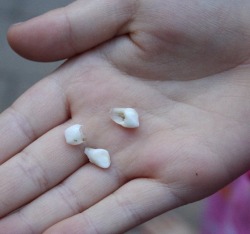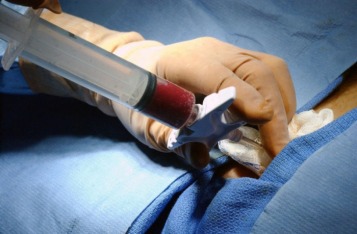How Science is Helping People Help Themselves
Somatic Stem Cell Locations
All somatic stem cells have a niche, a part of the organ where all of the stem cells migrate to perform their functions (reproduction and differentiation). [2]
Somatic stem cells can be found in the brain, bone marrow, peripheral blood, blood vessels, skeletal muscle, skin, teeth, heart, gut, liver, ovarian epithelium, and testis. [2]
Research has been done to prove that stem cells can be found in deciduous (baby) teeth. The crown of an exfoliated deciduous tooth contains a living pulp comprised of connective tissue, blood vessels, and odontoblasts. Twelve to twenty stem cells from each tooth were capable of forming colonies. These stem cells, called stem cells from human exfoliated deciduous teeth or SHED, were tested and showed the potential to become neural cells, although this has yet to be accomplished. They also displayed a strong capacity to induce recipient bone formation when implanted. [1]
Somatic stem cells can be found in the brain, bone marrow, peripheral blood, blood vessels, skeletal muscle, skin, teeth, heart, gut, liver, ovarian epithelium, and testis. [2]
Research has been done to prove that stem cells can be found in deciduous (baby) teeth. The crown of an exfoliated deciduous tooth contains a living pulp comprised of connective tissue, blood vessels, and odontoblasts. Twelve to twenty stem cells from each tooth were capable of forming colonies. These stem cells, called stem cells from human exfoliated deciduous teeth or SHED, were tested and showed the potential to become neural cells, although this has yet to be accomplished. They also displayed a strong capacity to induce recipient bone formation when implanted. [1]
Even with such little knowledge, SHED show much promise for the future because of their stem-cell qualities, the ability to make copies of themselves and differentiate into more specialized cells, and that they are so widely available. Most people first acquire deciduous teeth and then shed them for adult teeth. If this resource can be tapped and brought to its full potential, then humanity will have a steady and large source of stem cells.
Stem cells from the bone marrow have been used for many years in the treatment of such diseases as leukemia and aplastic anemia. In both of these diseases, the stem cells in the bone marrow malfunction and begin producing defective or immature blood cells. Using a needle and syringe, one to two quarts of bone marrow is extracted from the donor's hip bone, a rich source of it. [9]
Stem cells from the bone marrow have been used for many years in the treatment of such diseases as leukemia and aplastic anemia. In both of these diseases, the stem cells in the bone marrow malfunction and begin producing defective or immature blood cells. Using a needle and syringe, one to two quarts of bone marrow is extracted from the donor's hip bone, a rich source of it. [9]
The diseased person's bone marrow is destroyed by chemotherapy and/or radiation and the bone marrow is injected into his/her bloodstream. The bone marrow then makes it's way to the large bones, engrafts, and begins producing blood cells as per normal. [9]
If the bone marrow is from the diseased patient (in some cancers where the bone marrow is not affected) or an identical twin, then it is called an "allogenic" procedure. If it is from the bone marrow bank, and therefore not as good of a match, then it is called "autologous". [9]
There are some risks involved if the marrow does not match well enough. The patient's immune system may reject the bone marrow or the bone marrow may start attacking the patient which may be life threatening. [9]
The more we learn about stem cells, the better we can perform these bone marrow transplants, and the less risk will be involved.
If the bone marrow is from the diseased patient (in some cancers where the bone marrow is not affected) or an identical twin, then it is called an "allogenic" procedure. If it is from the bone marrow bank, and therefore not as good of a match, then it is called "autologous". [9]
There are some risks involved if the marrow does not match well enough. The patient's immune system may reject the bone marrow or the bone marrow may start attacking the patient which may be life threatening. [9]
The more we learn about stem cells, the better we can perform these bone marrow transplants, and the less risk will be involved.


